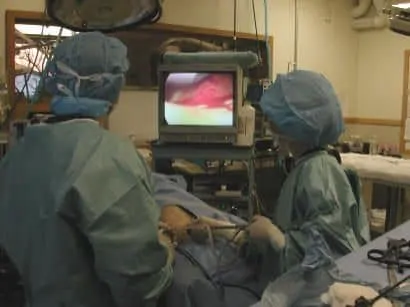Key Points
A procedure called a gastropexy can be done to tack the right side of the stomach to the right side of the body wall using minimally invasive surgery
Benefits of the laparoscopic surgery:
- Shorter surgery and anesthesia time
- Less pain
- Quicker recovery
- Prevents life-threatening twist of stomach
- Less expensive than treating life-threatening GDV
- Patient can go home on the day of the procedure
Indications
- Gastric volvulus and dilation (GDV) or bloat is a common life-threatening condition that affects many large breeds of dogs; for information on GDV look at GDV web page. This condition involves distention of the stomach usually with gas and twisting of the stomach
- Why wait until the life-threatening condition has occurred? A preventative minimally invasive procedure is now available for your pet
- Breeds that are susceptible to GDV and should be considered for the preventative procedure
- Great Danes – one in four Danes will bloat in their lifetime
- Irish Wolf Hounds
- German Shepherds
- Standard Poodles
- Blood Hounds
Laparoscopic surgery
- A procedure called a gastropexy can be done to tack the right side of the stomach to the right side of the body wall using minimally invasive surgery
- A scope is inserted into the belly cavity
- An instrument port is made on the front right side of the abdomen and the right side of the stomach is picked up with a laparoscopic instrument
- The instrument port incision is enlarged to 1 1/2 inches and the stomach is sutured to the right body wall
- Below is a photo of laparoscopic surgery being performed; the surgery is visualized on the monitor as it is being performed

Benefits of the laparoscopic surgery over open surgery
- Shorter surgery and anesthesia time
- Minimally invasive
- Two small incisions therefore less scaring
- Less pain
- Quicker recovery
- Prevents life-threatening twist of stomach
- Less expensive than treating life-threatening GDV
- Patient can go home on the day of the procedure


